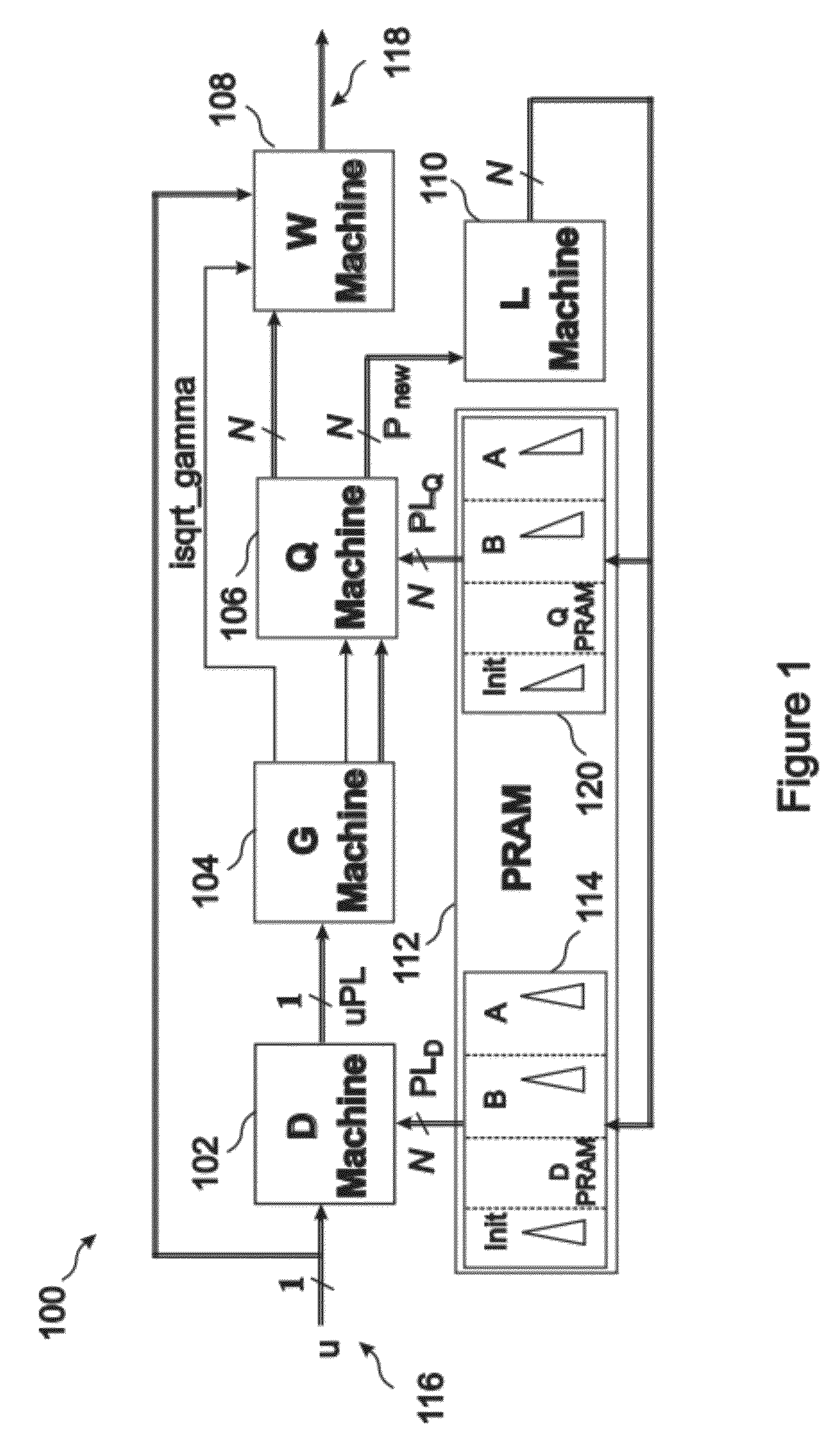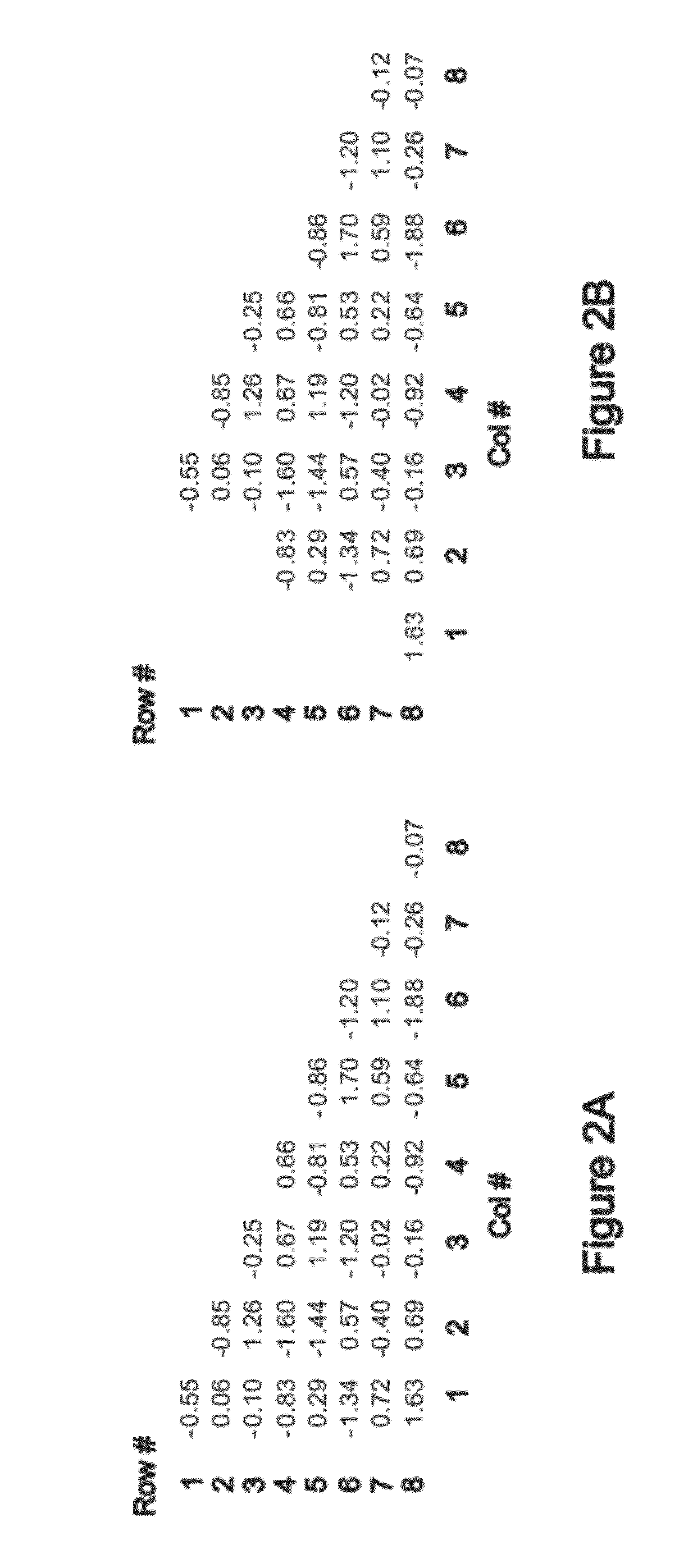QR-RLS adaptive digital filter with 18-bit pipeline architecture
a digital filter and pipeline architecture technology, applied in the field of digital filters, can solve the problems of requiring more computational resources than lms algorithms, affecting and algorithms that typically have a fast convergence speed, so as to improve the reliability of weak signals, reduce the effect of impulses, and improve the accuracy of digital filters
- Summary
- Abstract
- Description
- Claims
- Application Information
AI Technical Summary
Benefits of technology
Problems solved by technology
Method used
Image
Examples
Embodiment Construction
[0099]With reference to FIG. 1, the present invention is an N-tap QR-RLS implementation 100 which combines efficient use of 18-bit multipliers with a pipeline architecture so as to provide high speed filtering without requiring excessive computational resources. The filter is organized into a group of “machines” designated as the “D” machine 102, the “G” machine 104, the “Q” machine 106, the “W” machine 108, and the “L” machine 110. Two copies of the λ-weighted N×N P-matrix (PL) are maintained in a PRAM 110, where λ is the so-called “forgetting factor.” The D-PRAM copy 114 is supplied to D-machine 102, which performs the inner product between the input signal u 116 and the PL-matrix.
[0100]The G-machine receives the uPL output of the D-machine and calculates the “Givens” rotors, which are then applied to the signal by the by the Q-machine. The G-machine also calculates the inverse square root of the conversion factor γ, which is used by the W-machine to calculate the weighting functi...
PUM
 Login to View More
Login to View More Abstract
Description
Claims
Application Information
 Login to View More
Login to View More - R&D
- Intellectual Property
- Life Sciences
- Materials
- Tech Scout
- Unparalleled Data Quality
- Higher Quality Content
- 60% Fewer Hallucinations
Browse by: Latest US Patents, China's latest patents, Technical Efficacy Thesaurus, Application Domain, Technology Topic, Popular Technical Reports.
© 2025 PatSnap. All rights reserved.Legal|Privacy policy|Modern Slavery Act Transparency Statement|Sitemap|About US| Contact US: help@patsnap.com



